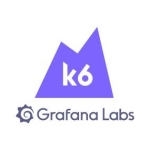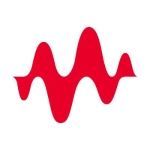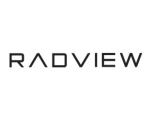What is our primary use case?
We used it for putting the load on the system. For example, for a big sale of an online marketplace, we created the scripts with performance testing tools such as Neotys and LoadRunner. We used to search for a product and add it to the cart. We used to capture all this traffic through these tools, and then, we used to do the real-time testing. So, we used to simulate the real-world user scenario. For example, if the company was expecting around 20,000 users on a specific day, we used to simulate the volume of 20,000 users on the application.
The deployment model depends on a client's requirements and licensing. If we have a sufficient budget, we always go for the SaaS model. If we have a limitation of licensing, then we prefer to go for on-premises deployment. We usually need to get support from the admin team to set up everything. We used to take care of this aspect so that the support team will be able to do things on our behalf, such as setting up things in their environment.
How has it helped my organization?
We can quickly do scripting with NeoLoad, which makes it easier to give timelines and meet them. We can easily tell a client that within this much time, we can provide the end-to-end scripts, and we'll be able to do the execution along with all the activities.
What is most valuable?
The licensing cost is very less for NeoLoad. It is user-friendly and easy to understand because they have created so many useful functionalities. When I started working with this tool, we just had to do the initial assessment about whether this tool will be able to support our daily work or not. I could easily understand it. I didn't have to search Google or watch YouTube videos. In just 15 to 20 minutes, I was able to understand the tool.
We can easily do scripting with NeoLoad. We just have to understand the basic functionality to create a script. There is not that much effort that we have to put in. If I have to transfer knowledge to a new person or a beginner, he will also be able to pick it up quickly.
What needs improvement?
LoadRunner supports multiple protocols, whereas NeoLoad supports only three protocols. With NeoLoad, we can go for the SAP technology, web-based HTTP, and Remote Desktop Protocol (RDP). If I have to simulate .NET application-based traffic, I won't be able to do that. So, protocol support is a limitation for NeoLoad. It should support more protocols.
One issue that we faced was that multiple users weren't able to work on the same application. We used to create multiple scripts based on the application and based on the projects, and then we used to integrate all of them in a single place. With NeoLoad, if you have to do this activity, to import a script, one user has to log off, and the second user has to copy the script and improve it, which is a time-consuming activity. These are the things that can block any further activity.
For how long have I used the solution?
I have been working with this solution for 18 months.
What do I think about the scalability of the solution?
I would rate it a nine out of 10 in terms of scalability. It is currently being used extensively. My organization is huge, and we have an employee count of more than 300,000. I wouldn't be able to provide the exact count, but for my project, 20 people are using this tool.
How are customer service and support?
They usually clarify any queries or issues within three hours. They usually come back to us within three hours, which is as per our SLA, so that's good. I would rate them an eight out of 10.
Which solution did I use previously and why did I switch?
Previously, we were using Micro Focus LoadRunner Enterprise. It is still in use. We haven't completely removed it. We switched because of the licensing and the time taken to create a script.
Neotys has taken some references from LoadRunner to create NeoLoad. So, in terms of functionality, NeoLoad and LoadRunner are quite the same.
The licensing cost of NeoLoad is lesser than LoadRunner. LoadRunner supports a higher number of protocols than NeoLoad. LoadRunner has more protocols for interacting with the application than NeoLoad. So, there are multiple things that we can simulate with LoadRunner, such as a desktop application or traffic for a banking domain.
If I have to create a script in LoadRunner, it usually takes around six hours, but if I do the same thing in Neotys, it usually takes around one and a half hours to complete everything. So, we can provide a deadline for deploying a script. Time is money, so NeoLoad is better in terms of time.
How was the initial setup?
It is straightforward. You don't need much understanding from the installation perspective. You just need to download the .exe and install it. You just need the license, and if you are going for the trial version, you just upload the license. If you are going for a business license, you just have to tie up with them and reach an agreement. That's it.
It is a one-day thing. One day is enough to complete the installation and the setup.
What about the implementation team?
It was an in-house job. In terms of maintenance, we usually have an admin team and a security team to put patches, etc.
What's my experience with pricing, setup cost, and licensing?
Its licensing cost is very less.
What other advice do I have?
If you are dealing only with web HTTP, you can definitely go ahead with this solution because time is money.
I would rate NeoLoad an eight out of 10.
Disclosure: My company does not have a business relationship with this vendor other than being a customer.


















